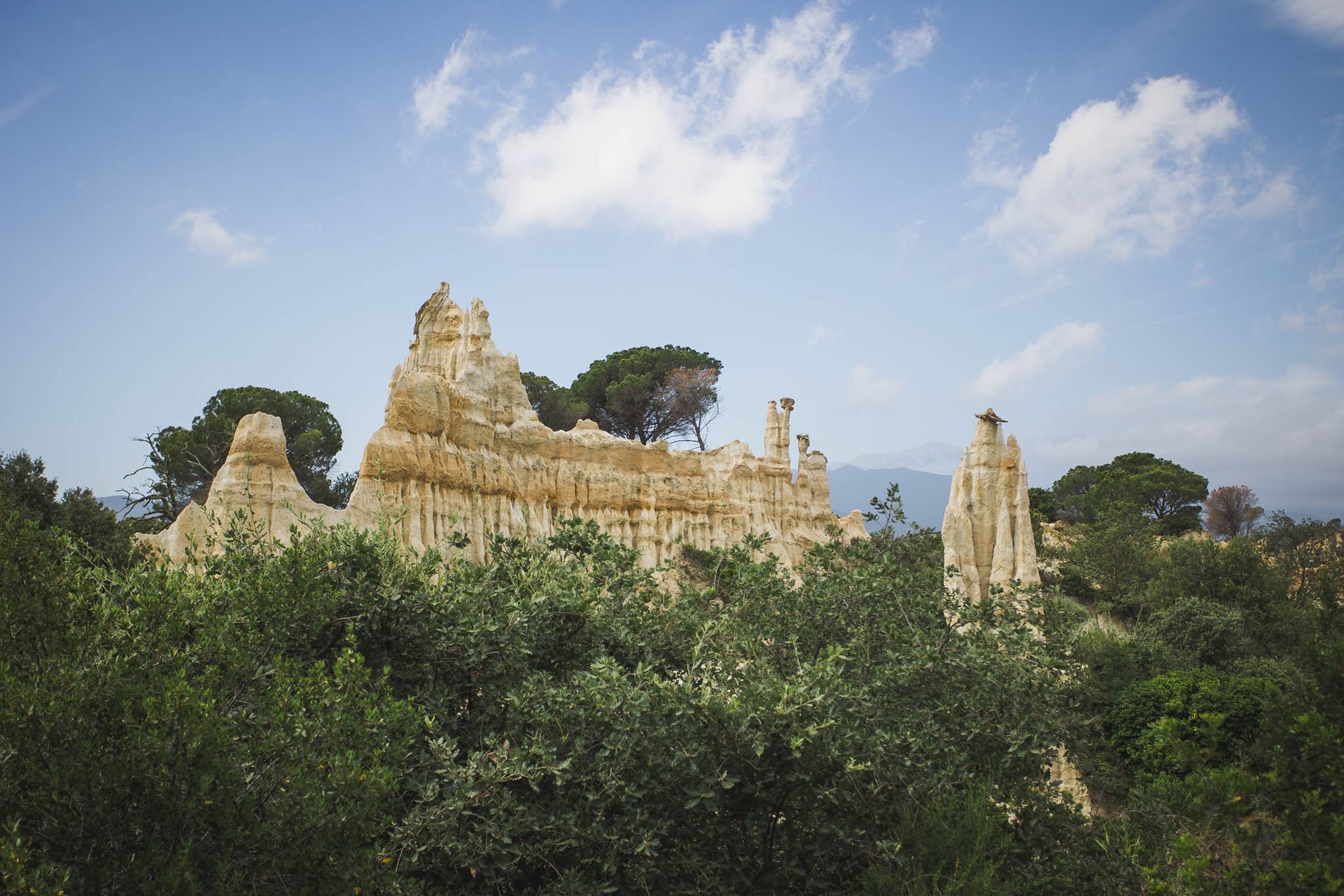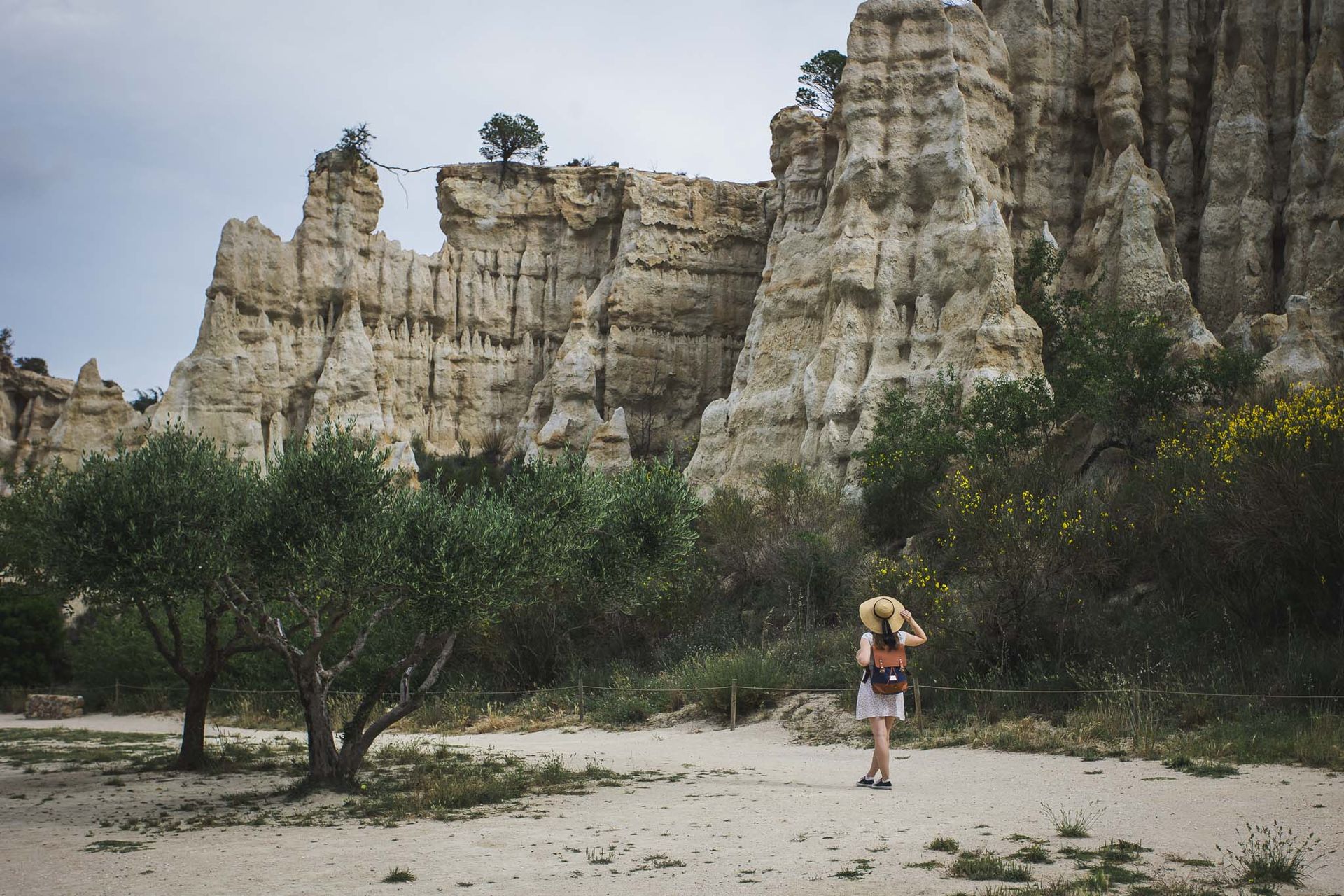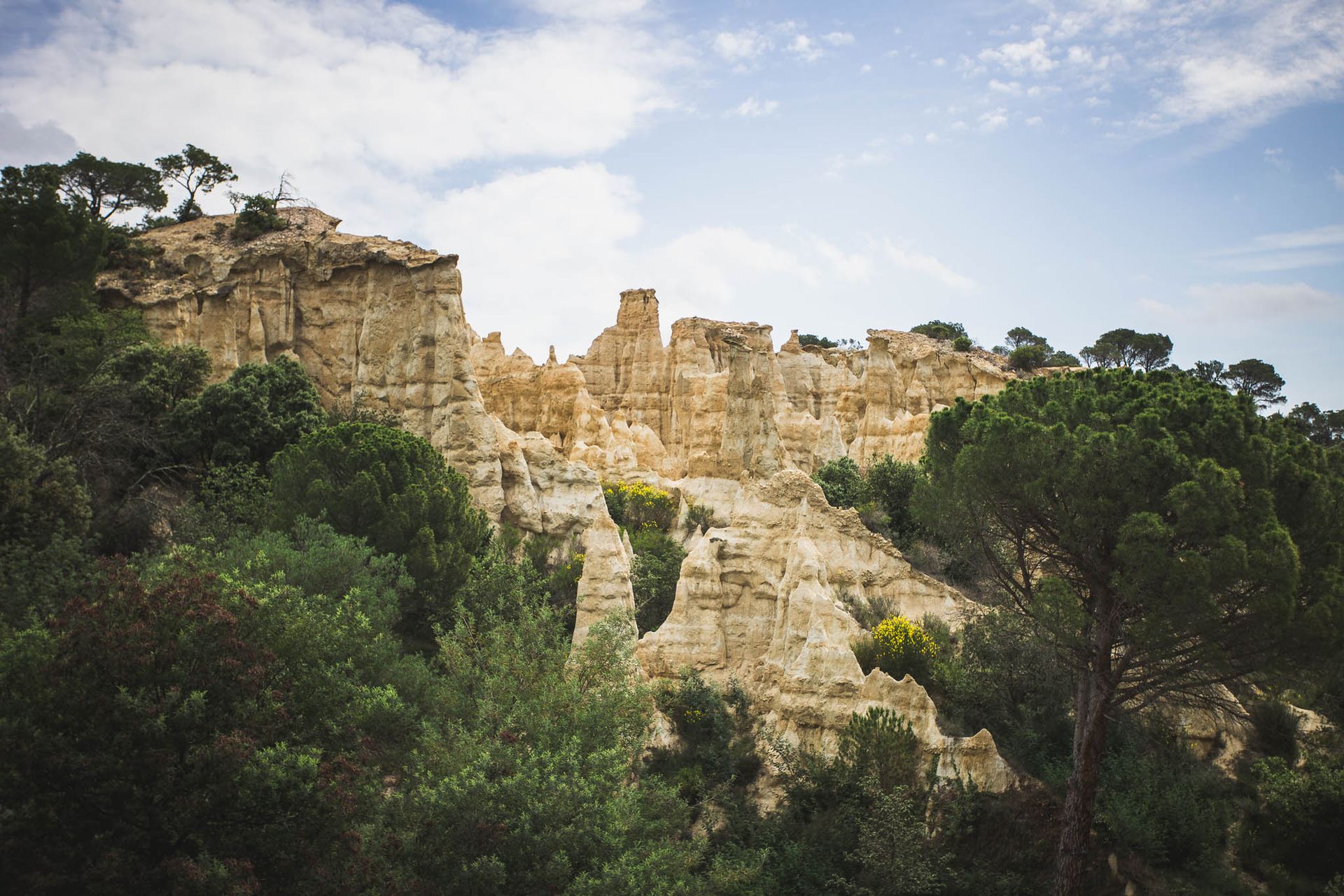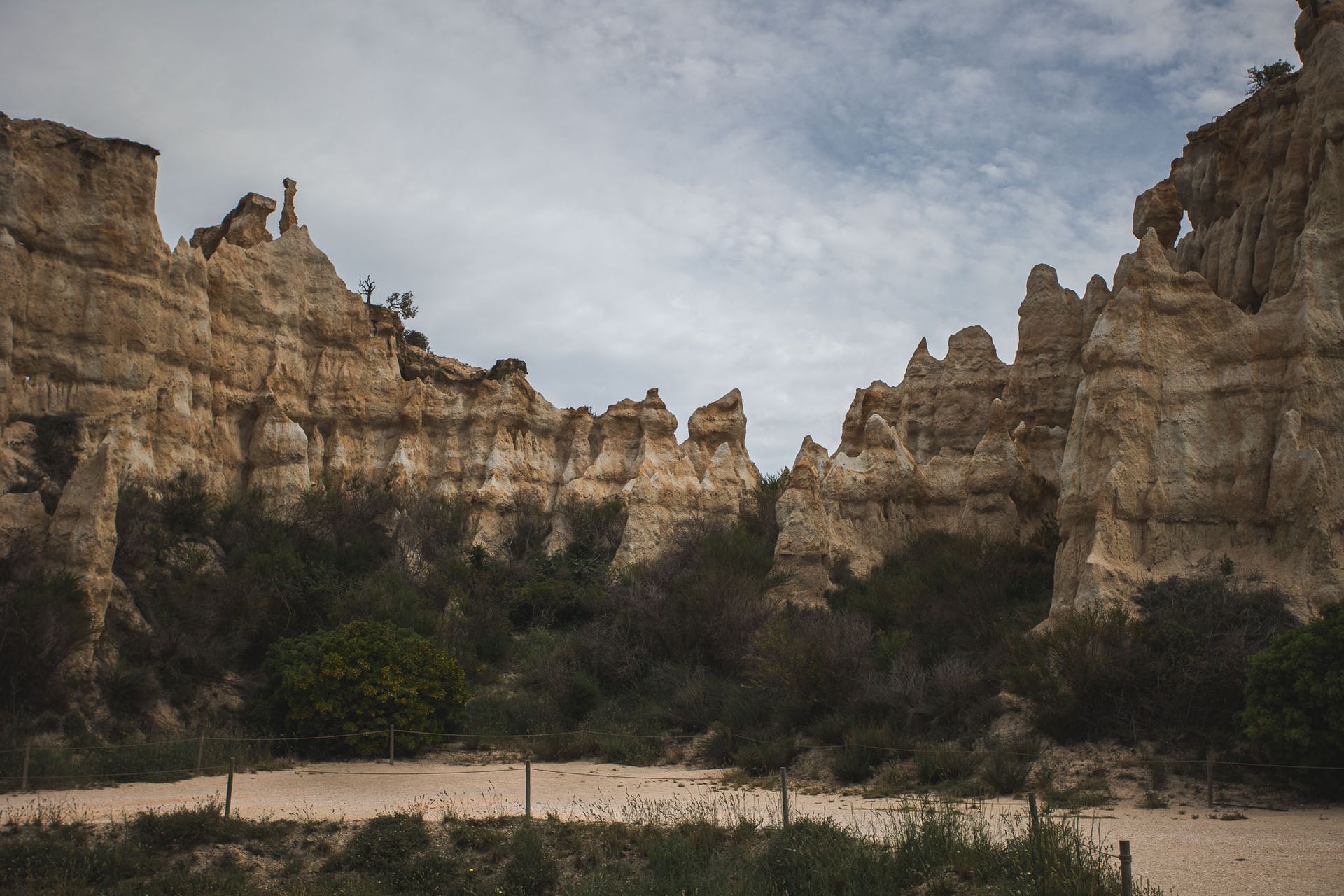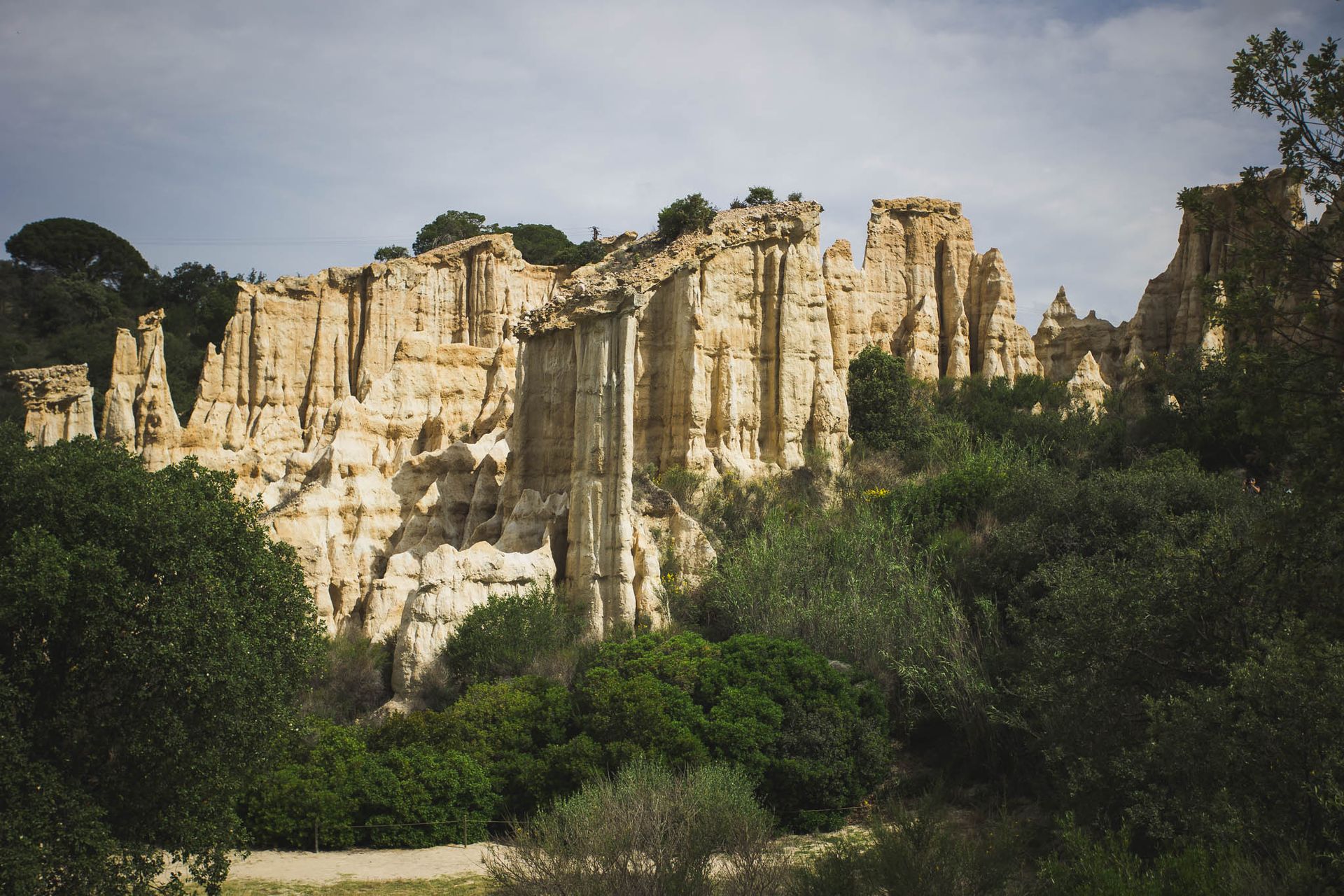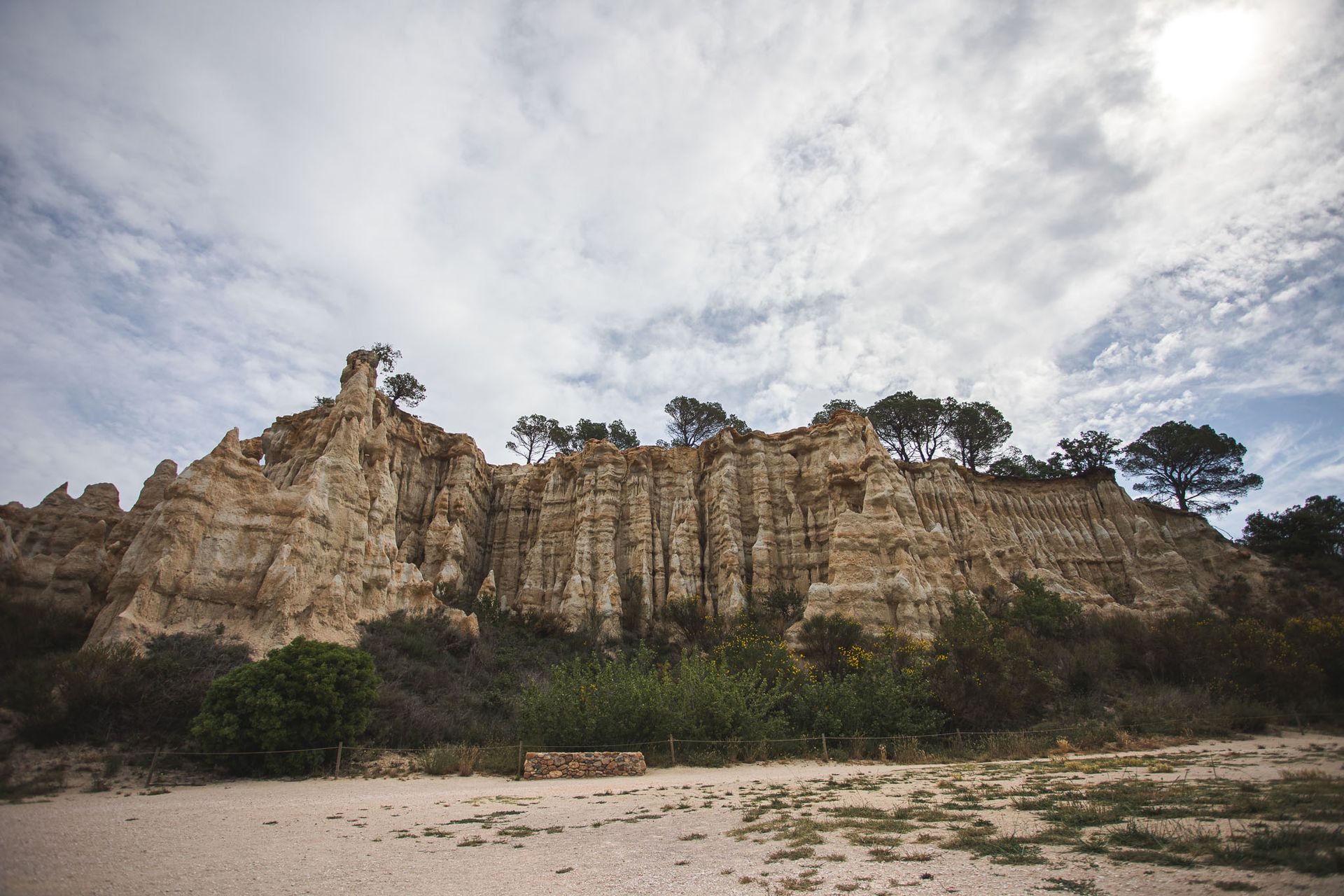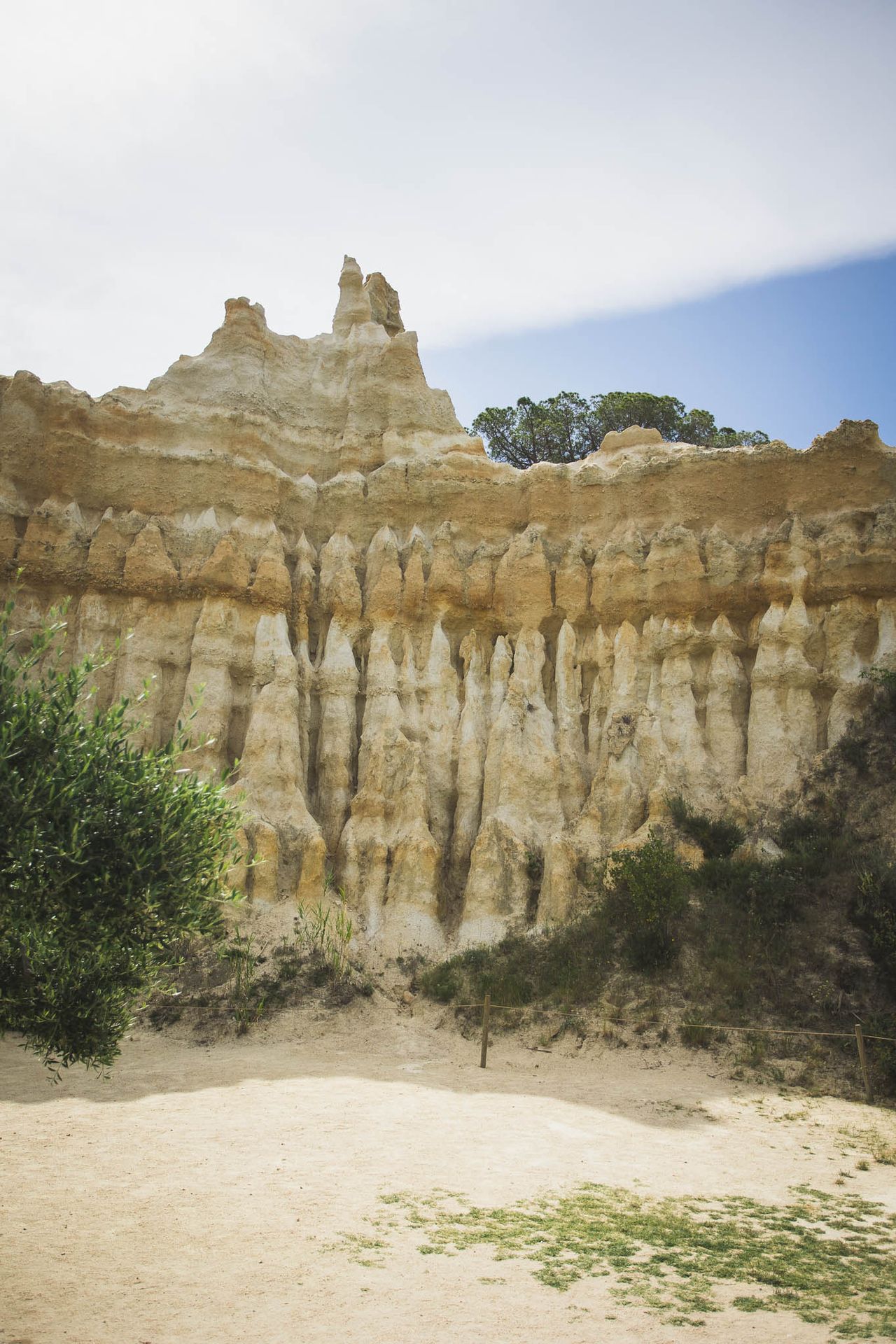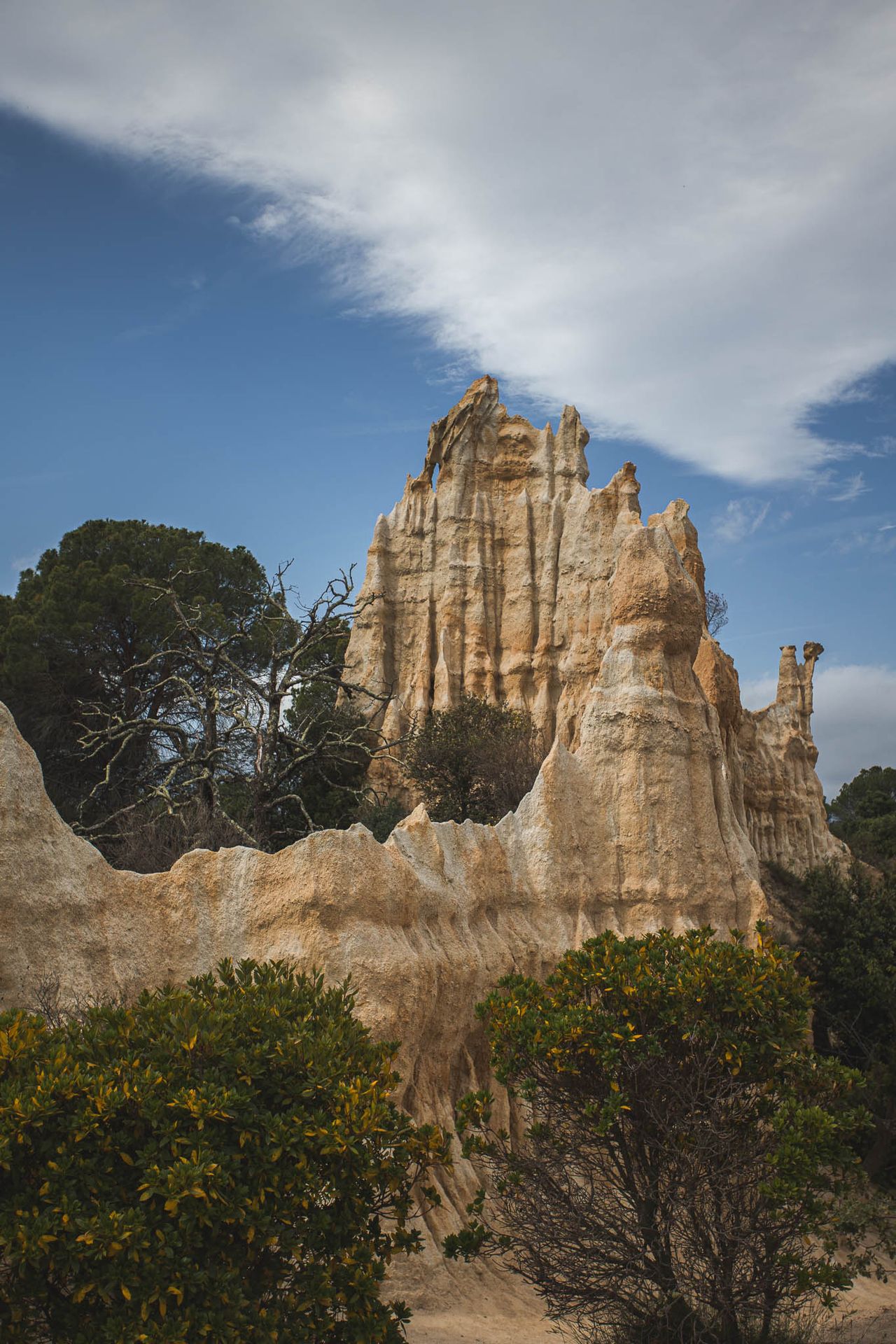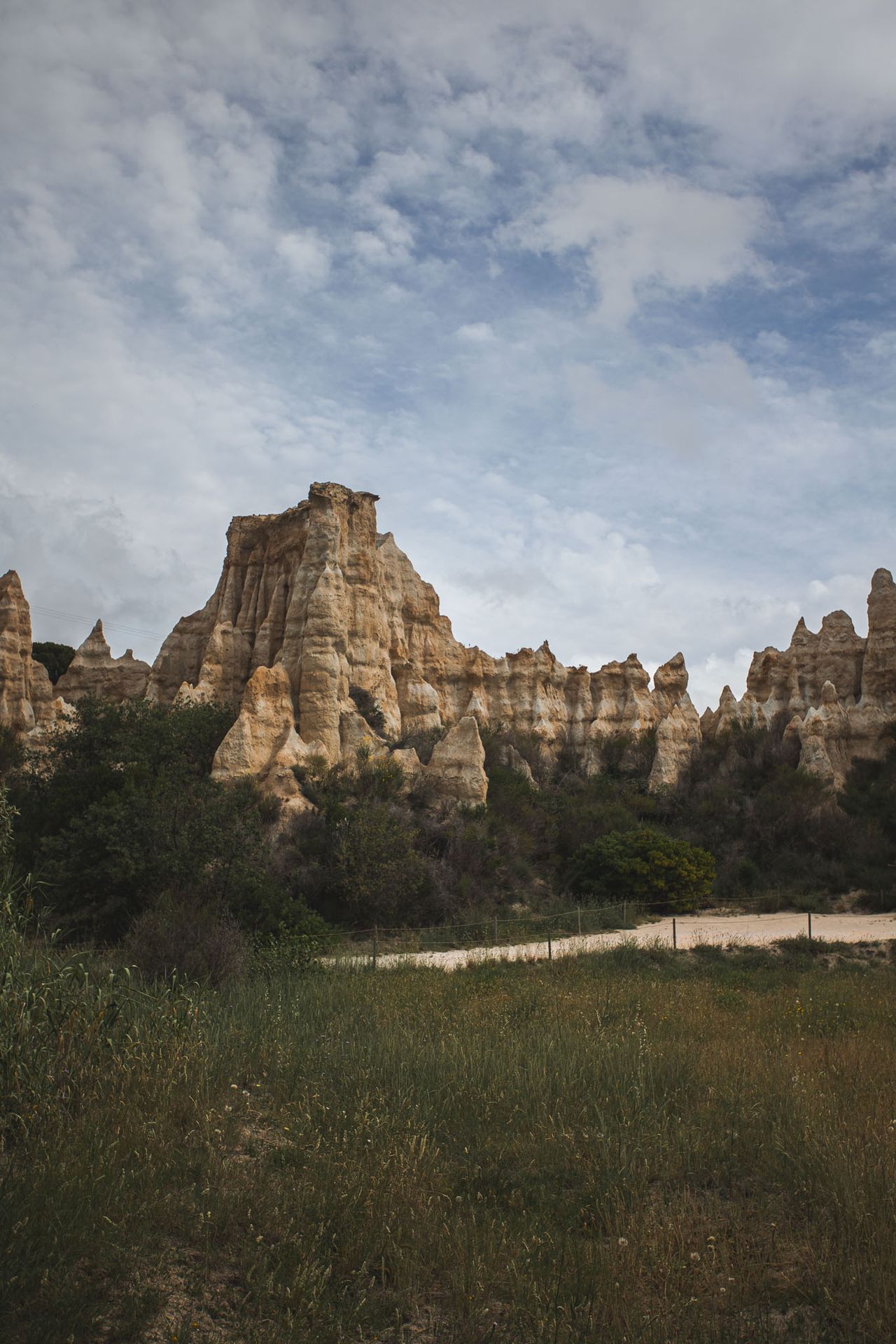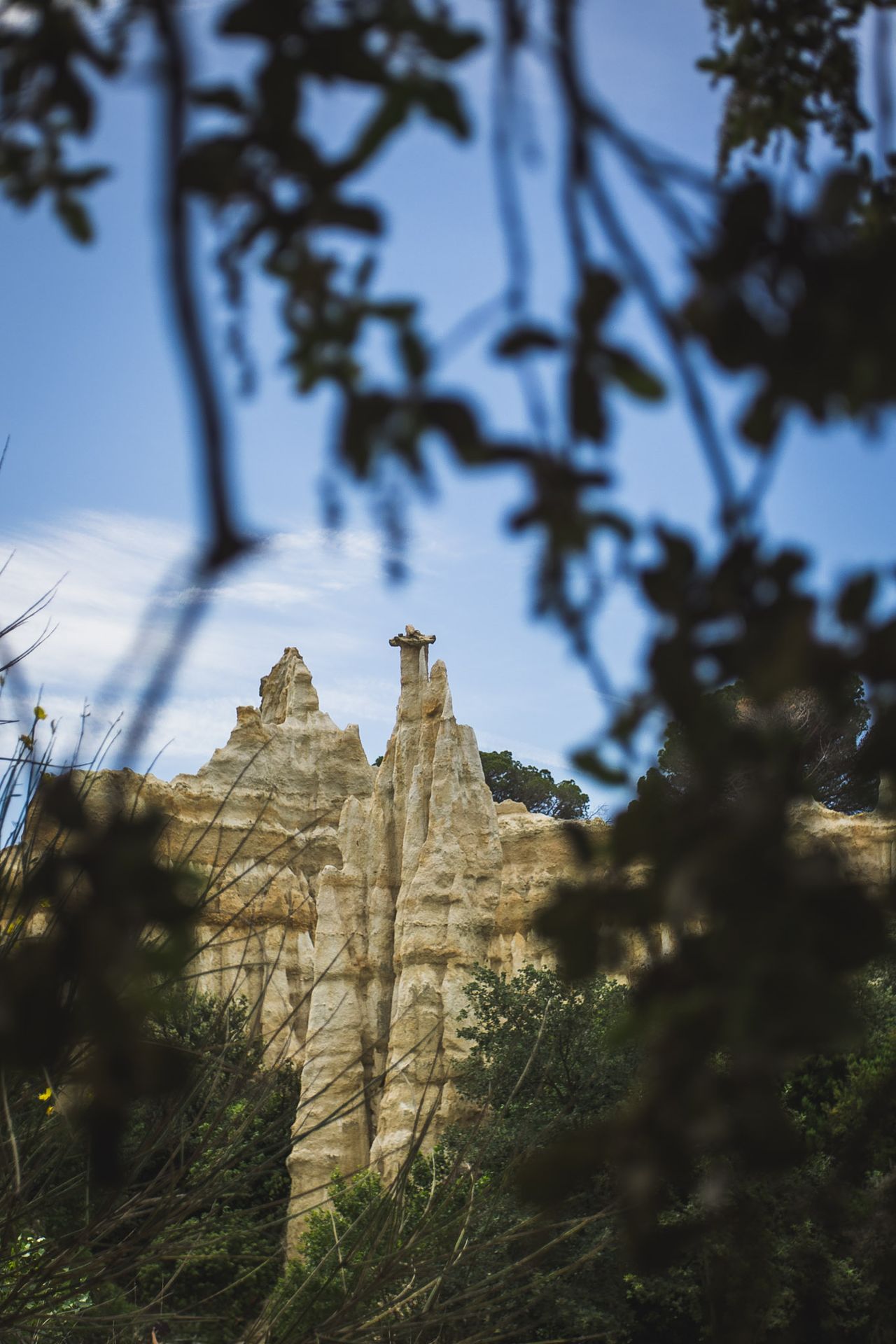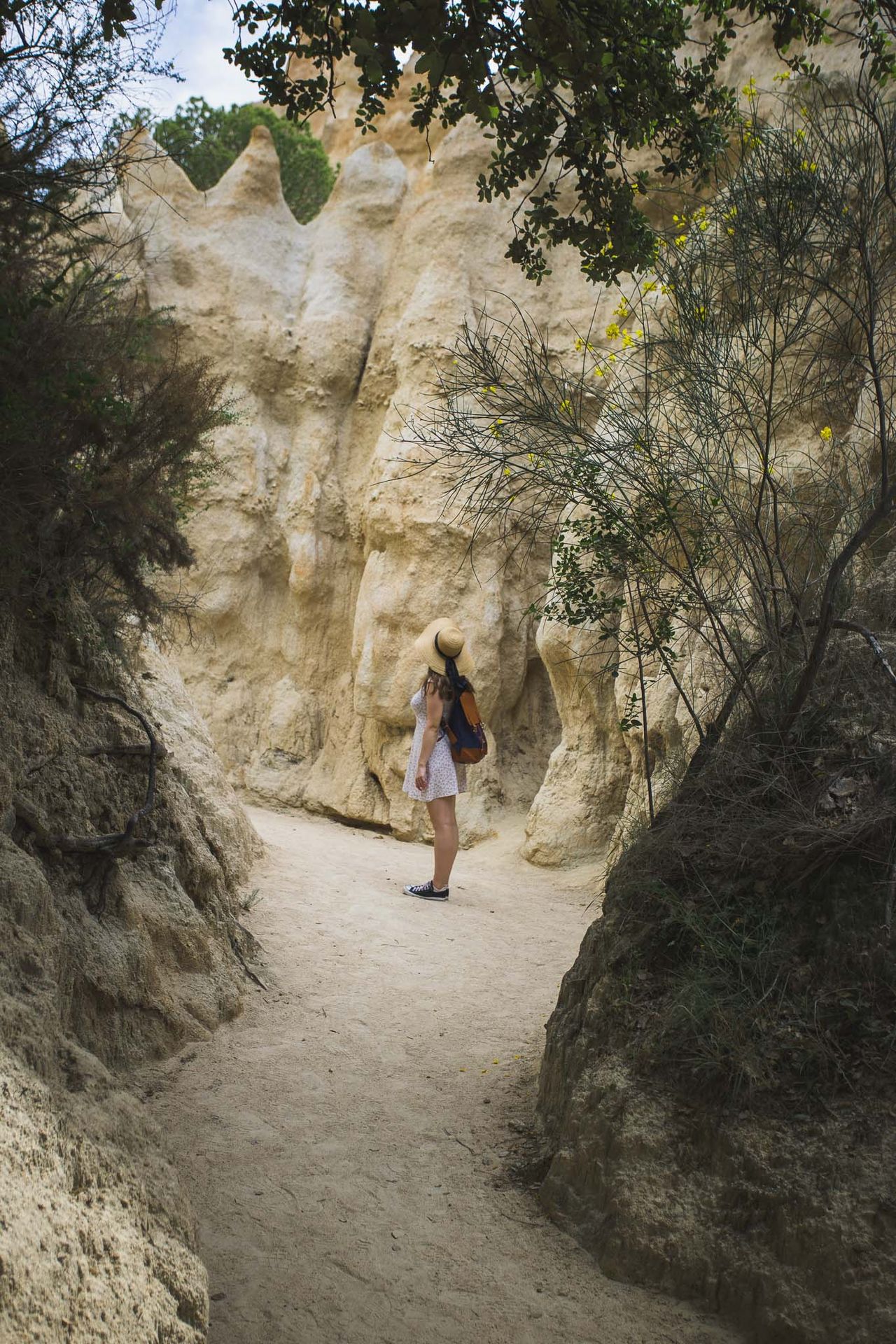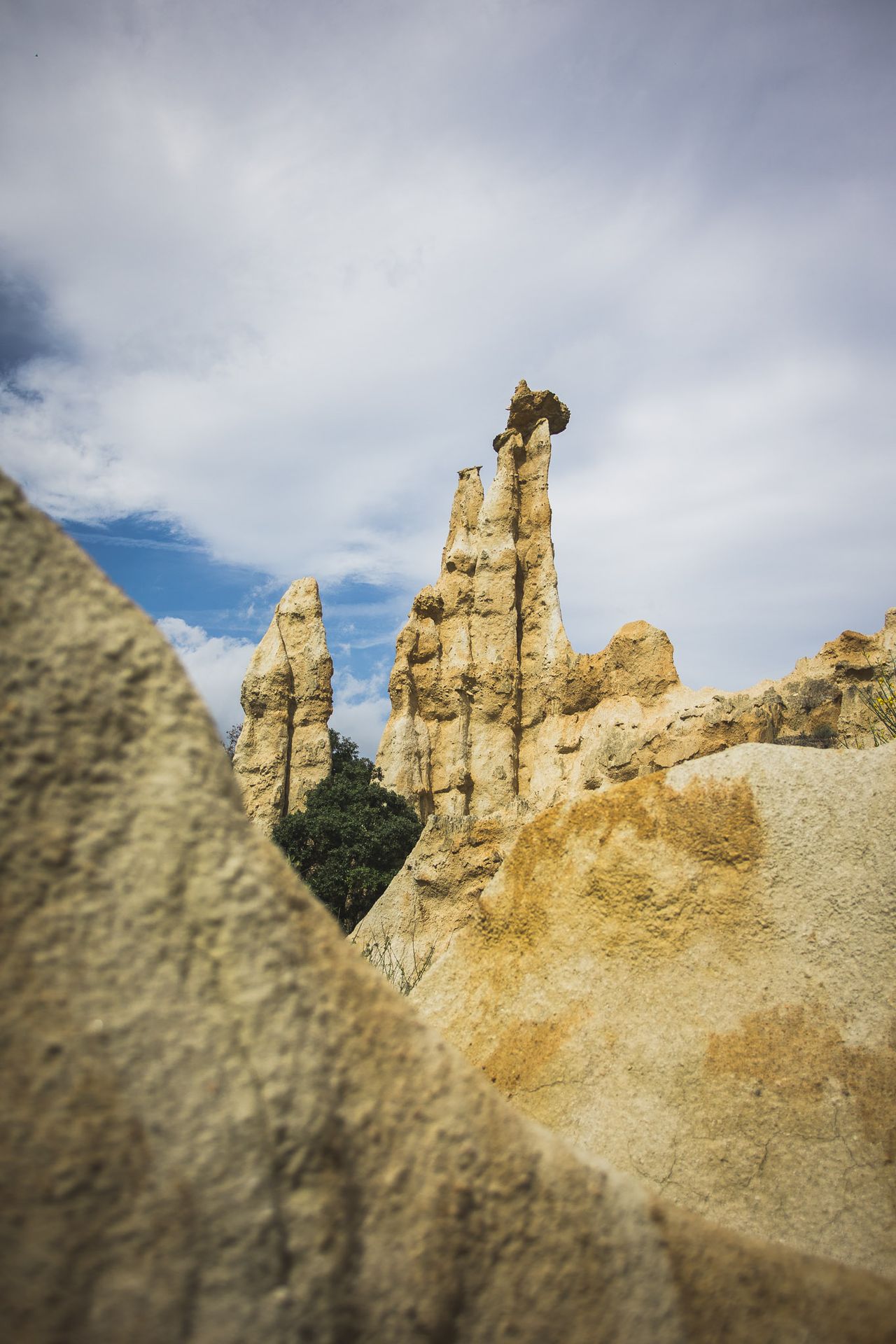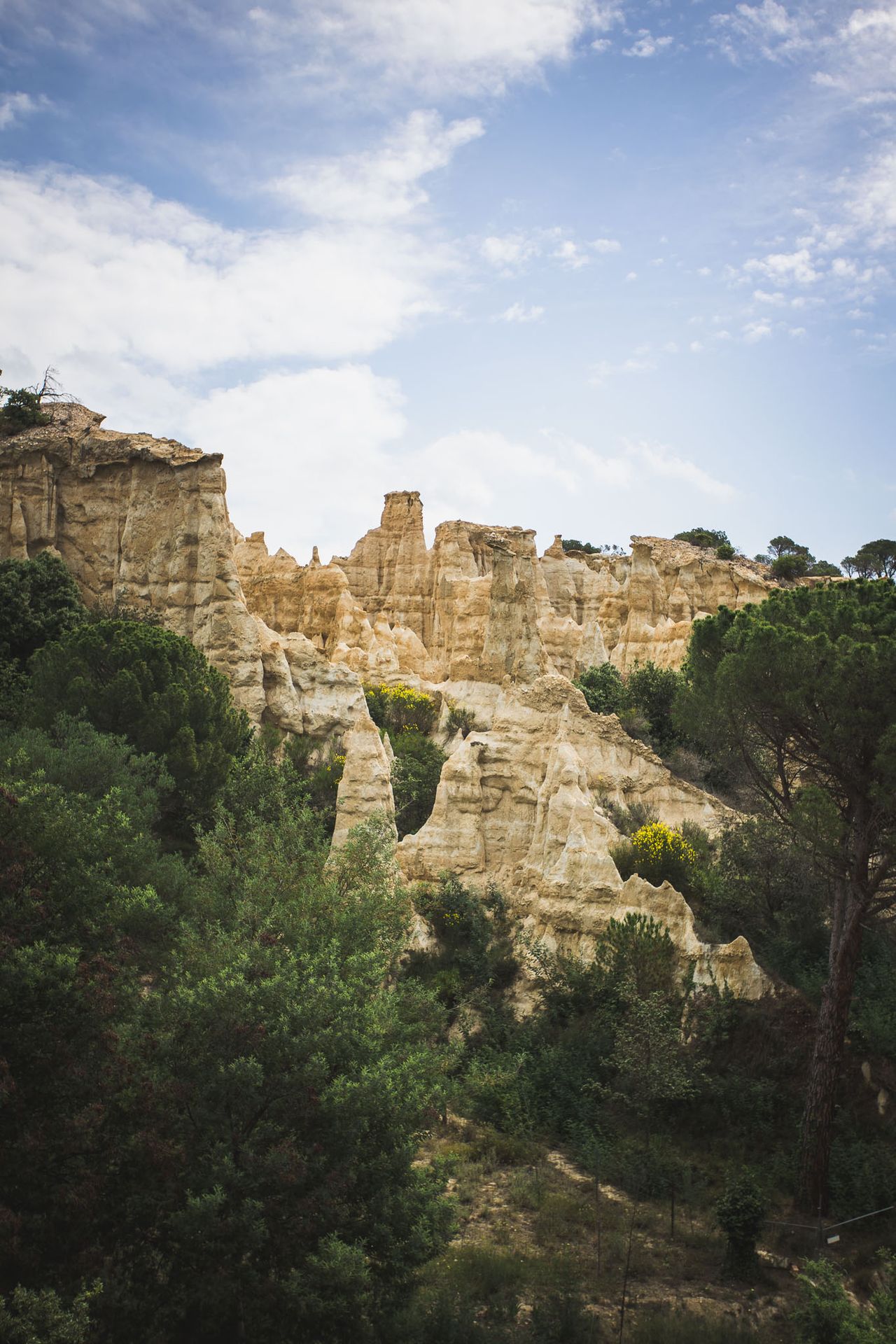The geological phenomenon behind the Orgues
The Orgues d'Ille-sur-Têt are the result of millions of years of erosion and sedimentation. This exceptional geological site, known as "fairy chimneys," features a distinctive relief composed of columns of earth and soft rocks, primarily conglomerates and sand. The formations vary in height, ranging from 140 to 220 meters in the eastern part of the site and reaching up to 244 meters in the western part.
A fairy chimney is a formation resulting from differential erosion, characterized by a column of soft rock topped by a more resistant cap. Erosion is more intense on the softer part, leading to a gradual reduction in the diameter of the column. Over time, the cap loses its support and eventually collapses, either in a single block or in pieces, depending on its shape. Once the cap is gone, the column erodes much more quickly.
Around 5 million years ago, the area where the Orgues d'Ille-sur-Têt are located was a vast alluvial plain traversed by a river. Successive deposits of sediments, consisting of pebbles, sand, and clay, gradually formed a thick layer of terrain. Later, tectonic activity and climate changes led to a slow but continuous erosion of this layer. Water, through rainfall and runoff, sculpted the softer materials, giving rise to these narrow, towering columns.
These formations, sometimes topped with more resistant "caps," make up the Orgues d'Ille-sur-Têt today. The uniqueness of this site lies in the fragility of these structures. Erosion continues to sculpt and transform these formations, making the landscape dynamic and constantly evolving. Each visit to the Orgues d'Ille-sur-Têt thus offers a unique spectacle, shaped by time and the elements.
A must-see tourist site
The Orgues d'Ille-sur-Têt are a treasure to explore, offering a unique experience for nature lovers, photographers, and amateur geologists. The site, which is accessible to everyone, can be visited via a marked trail that allows close observation of these rock formations while preserving their integrity.
The best time to visit the Orgues d'Ille-sur-Têt is in spring or autumn, when the temperatures are pleasant and the sunlight highlights the colors of the rock formations. Be sure to bring water, comfortable shoes, and a camera to capture this spectacular landscape !
Practical Information
Entry Fee : The admission price is €5 per person. This fee helps with the maintenance and protection of this fragile natural heritage.
Access : To reach the Orgues d'Ille-sur-Têt, you have several options :
- By car : You can park directly in front of the site entrance. The parking area is easily accessible and provides quick access to the Orgues.
- By train : From Perpignan, you can take the TER for €1, which connects Perpignan to Prades. Get off at the Ille-sur-Têt station, then walk for about 30 minutes to reach the site. This journey provides an opportunity to enjoy the surrounding landscapes and get ready to admire the beauty of the Orgues.
